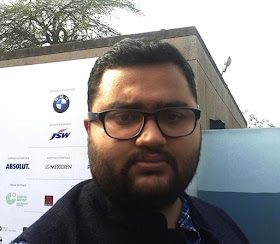Gardens of the Mind
Tasveer and TARQ are delighted to announce the opening of Gardens of the Mind in Mumbai on the 25th of February, 2016. As part its 10th anniversary, Tasveer brings together for the first time the works of Indian artist, Swapan Nayak, and French fashion and lifestyle photographer, Gilles Bensimon, in an exhibition that juxtaposes two very different approaches to photographing elements of the natural world.
Gilles Bensimon, former art director of Elle, makes a significant departure from his earlier figurative oeuvre in his series Watercolour, featured here. Fascinated by the beauty of flowers, and by their associations with myriad varieties of cultural expression around the world, he both literally and metaphorically submerged himself – and volumes of freshly cut blooms – into pools of water to create amazing blossoms of colour. The resulting images present a range of wonderful palettes and blurring the lines of abstraction and representation, yield a new perspective on the traditional notions associated with the depiction of the flower in art.
 |
| Recent work Gilles Bensimon at TARQ |
Bensimon’s photographs bursting with colour and a refractive-glossiness, are a stark contrast to Swapan Nayak’s black and white minimalist imagery. Nayak, a former photojournalist, also examines the natural world, and its intimate association to transformation. Made over a span of three years, in Eastern and North Eastern India, his series Radha: A Love in Eternity also breaks away from simple representation, producing the known and familiar and new, graphic ways. Intended to be an exploration of purity, the nature of the self, of consciousness, the profound and the divine, this series was inspired by his reading of Vaishanava Padabali, a nearly 700 year old Bengali text, that narrates the very popular Hindu myth, of Radha and Krishna and their eternal love. In many ways, this series also forms a lateral progression from Nayak’s earlier Being and Nothingness that was inspired by Satre’s text of the same name and involved a quest for the truth.
Providing a unique opportunity in the study of photographic method and practice, this exhibition through its juxtaposition of two distinct aesthetic styles highlights the diversity offered by the photographic medium in interpreting and re-presenting reality.
SWAPAN NAYAK
Born in 1965, Swapan Nayak is an independent photographer based in Kolkata, India who started working professionally from 1995 and has worked in editorial photography for various publications both in India and abroad. He was awarded the National Media Fellowship (2002-2003) by the National Foundation for India, the Nirmaan photography fellowship award in 2006 and the National Senior Fellowship in photography (visual art) for the period of 2009-2011 by the Ministry of Culture, Government of India.
 |
| Recent work Srwapan Nayak at TARQ |
Nayak has held three main solo exhibitions, ‘Nowhere People’, ‘Refugees In Their Own Land’ and ‘Being & Nothingness’, and was also part of the group exhibition ‘Click! Contemporary photography from India’ organised by the Vadehra Art Gallery in 2008. His work has further been published in several international magazines; Time, News Week, Asia Week and Southern Exposure, amongst others.
GILLES BENSIMON
Born ‘a relatively long time ago’, in his own words, into a family of art dealers and artists, Gilles Bensimon is an internationally acclaimed fashion and lifestyle photographer, who counts his current age as 15 in leap years, since he was born on February 29. After stints in art school and the army, he ended up working for fashion magazines in France. Bensimon established his international reputation at the helm of Elle magazine, and his star-studded portfolio consists of a very long list of leading models and celebrities, including Cindy Crawford, Naomi Campbell, Gisele Bündchen, Madonna, Gwyneth Paltrow, Keira Knightley, Beyoncé, Jennifer Lopez, Reese Witherspoon, Sarah Jessica Parker, Halle Berry and Uma Thurman; and his commercial clients have ranged from Kohl’s to Saks Fifth Avenue and Maybelline to Clarins.
Exhibition Previews: 25th February 2016
Exhibition Continues: 26th February - 19th March 2016
Exhibition Continues: 26th February - 19th March 2016
F35/36 Dhanraj Mahal
C.S.M. Marg, Apollo Bunder Colaba
Mumbai 400001
Monday to Saturday, from 11am to 6pm; Sunday, closed
Press Contact: press@tasveerarts.com | +91 080 40535233
C.S.M. Marg, Apollo Bunder Colaba
Mumbai 400001
Monday to Saturday, from 11am to 6pm; Sunday, closed
Press Contact: press@tasveerarts.com | +91 080 40535233
All copyright Tarq





















